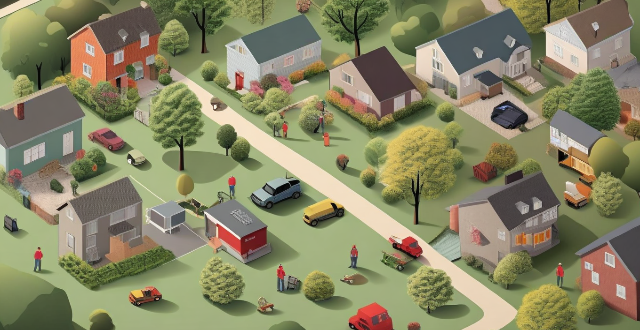Ring Valve

How can I fix a leaky faucet at home ?
Fixing a leaky faucet is a common household problem that can be solved with a few simple tools and steps. Here's how you can do it: ## Supplies Needed: * Wrench or pliers * Screwdriver * New washer or O-ring (depending on the type of faucet) * Pipe tape or thread sealant ## Steps to Fix a Leaky Faucet: ### 1. Turn Off the Water Supply Before starting any work on the faucet, turn off the water supply to the sink. This will prevent any accidental flooding while working on the faucet. ### 2. Remove the Handle Use a wrench or pliers to remove the handle of the faucet. Be careful not to damage the surrounding area while doing this. ### 3. Remove the Valve Stem Once the handle is removed, use a screwdriver to remove the valve stem from the faucet body. The valve stem is the long metal rod that goes into the faucet body. ### 4. Replace the Washer or O-ring The washer or O-ring is located at the bottom of the valve stem. If it is damaged or worn out, replace it with a new one. Make sure to choose the correct size and type for your faucet. ### 5. Reassemble the Faucet Once you have replaced the washer or O-ring, reassemble the faucet in reverse order of disassembly. Apply pipe tape or thread sealant to the threads before tightening them to prevent leaks. ### 6. Test the Faucet Turn on the water supply and test the faucet to make sure it is no longer leaking. If it is still leaking, check to see if all connections are tight and if there are any other issues with the faucet.

What are some easy DIY plumbing repairs for homeowners ?
Plumbing repairs can be intimidating for homeowners, but there are several simple and straightforward tasks that you can do yourself without the need for a professional plumber. Here are some easy DIY plumbing repairs that homeowners can tackle: 1. Fixing a Leaky Faucet: To fix a leaky faucet, turn off the water supply, remove the handle, use a wrench to unscrew the packing nut and replace any worn-out washers or O-rings. Reassemble the faucet and turn on the water supply to check for leaks. 2. Unclogging a Drain: Clogged drains are another common plumbing issue that homeowners can easily fix themselves. First, try using a plunger to create suction and force the clog through the drain. If the plunger doesn't work, use a drain snake to physically remove the clog from the drain pipe. Once the clog is removed, run hot water through the drain to clear any remaining debris. 3. Replacing a Toilet Flapper Valve: If your toilet won't stop running, it may be due to a faulty flapper valve. Turn off the water supply to the toilet and flush it to empty the tank. Remove the old flapper valve by unhooking it from the chain and unscrewing it from the overflow tube. Install the new flapper valve by screwing it onto the overflow tube and reattaching the chain to the handle lever. Turn on the water supply and test the toilet to make sure it works properly. These are just a few examples of easy DIY plumbing repairs that homeowners can do themselves. By tackling these simple tasks, you can save money on plumbing bills and gain confidence in your ability to maintain your home's plumbing system. However, if you encounter more complex issues or feel uncomfortable performing certain repairs, it's always best to consult with a professional plumber.

What are some simple steps to fix a running toilet ?
This text provides a step-by-step guide on how to fix a running toilet, including identifying the problem, adjusting or replacing the flapper or tank ball, adjusting the float level, checking and adjusting the fill valve, testing the fix, and when to call a professional.

What are the best home security systems available in the market ?
Home security systems have become an essential part of modern homes, providing peace of mind and protection against burglaries, fires, and other emergencies. With the advancements in technology, there are several home security systems available in the market that offer a wide range of features and benefits. In this article, we will discuss some of the best home security systems available in the market.

What are some signs that a fire extinguisher may need to be replaced ?
Fire extinguishers are crucial safety equipment that need to be in good condition. Signs that indicate a fire extinguisher needs replacement include: 1. **Pressure Indicator**: If the indicator is in the red zone or below, it needs recharging or replacement. 2. **Expiration Date**: Replace immediately if the extinguisher has passed its expiration date. 3. **Corrosion and Rust**: Corrosion or rust compromises the integrity of the extinguisher. 4. **Leaking or Discharging**: Indicates a problem with the seal or valve, requiring replacement. 5. **Damage or Wear and Tear**: Replace if there are dents, cracks, or missing parts due to damage or wear. 6. **Manufacturer's Recommendations**: Follow the manufacturer's guidelines for optimal performance and safety.

What are some innovative smart home devices that can be controlled by smartphones ?
Innovative smart home devices controlled by smartphones offer enhanced convenience and energy efficiency. These include smart light bulbs like Philips Hue and LIFX, smart thermostats such as Nest and Ecobee, smart locks like August Smart Lock and Yale Assure Lock, smart security cameras including Arlo Pro and Ring Video Doorbell, smart speakers and assistants like Amazon Echo and Google Nest Audio, smart plugs and switches such as WeMo Mini Smart Plug and TP-Link Kasa Smart Wi-Fi Switch, smart refrigerators like Samsung Family Hub Refrigerator and LG InstaView Refrigerator, and smart air quality monitors like AirVisual Pro and Dyson Pure Cool Link.

How can I plan a successful wildlife safari trip ?
Planning a successful wildlife safari trip requires careful research, hiring a reputable tour operator, packing appropriately, and being prepared for unexpected circumstances. Consider factors such as destination selection, weather conditions, itinerary inclusions, appropriate clothing, essential items, flexibility, and safety guidelines to ensure a safe and enjoyable experience while exploring the beauty of nature's wildest creatures.

How can education raise awareness about climate change and environmental issues ?
Education can play a crucial role in raising awareness about climate change and environmental issues by integrating these topics into the curriculum, promoting hands-on learning, encouraging critical thinking and problem-solving, fostering collaboration and partnerships, and implementing effective assessment and feedback mechanisms. By empowering students with knowledge and skills, educators can help them make informed decisions and take action to protect our planet.

What are the best smart home gadgets for improving daily life ?
Smart home gadgets offer convenience and efficiency in daily life. Some of the best include smart speakers like Amazon Echo and Google Nest Audio, smart light bulbs like Philips Hue and Lifx Mini White, smart thermostats like Nest Learning Thermostat and Ecobee SmartThermostat, smart security cameras like Arlo Pro 3 and Ring Video Doorbell, smart locks like August Smart Lock and Yale Assure Lock, smart plugs and power strips like TP-Link Kasa Smart Plug and Wemo Insight Switch, and smart kitchen appliances like Instant Pot Duo and Hamilton Beach Smart Coffee Maker. Incorporating these gadgets into your home can increase convenience, improve security, and better manage energy consumption.

What equipment do I need to start making unboxing videos ?
To start making unboxing videos, you'll need: 1. A camera or smartphone with at least 1080p resolution, image stabilization, and manual settings for clear, stable footage. 2. A tripod or gimbal to ensure steady shots and easy adjustments. 3. A microphone that provides clear audio and is easily connectable to your recording device. 4. Lighting equipment like softboxes, LED ring lights, and reflectors for even illumination. 5. A simple, clean background that is consistent across videos for brand recognition. 6. User-friendly editing software with features like color correction and audio mixing. 7. Extra accessories such as high-speed memory cards, spare batteries, and lens cleaning kits. 8. Props and tools for unboxing, including a letter opener, gloves, and measurement tools. Remember, while having the right equipment is crucial, your creativity, presentation skills, and consistency in publishing content are also key factors in the success of your unboxing channel.

In which regions of the world are earthquakes most common, and why ?
**Earthquakes: Understanding the Most Common Regions and Their Causes** Earthquakes are natural disasters that can occur worldwide but are most common in specific regions due to tectonic activities. The theory of plate tectonics explains how Earth's crust is divided into plates that interact through processes like subduction, collision, and separation, causing seismic activity at their boundaries. Major earthquake-prone regions include the Pacific Ring of Fire, the Himalayan Belt, the Mediterranean-Himalayan Belt, South America, and New Zealand. These areas experience frequent and intense earthquakes due to their locations along multiple convergent plate boundaries and active subduction zones. Factors contributing to high seismic activity include plate boundaries, subduction zones, transform faults, and volcanic activity. Understanding these patterns is crucial for earthquake preparedness and mitigation efforts.